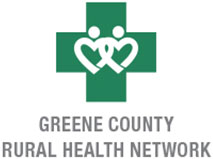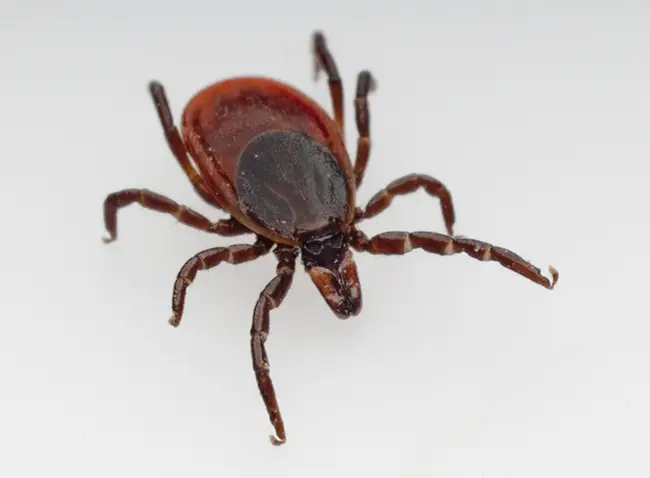What are ticks?
Ticks are parasitic arachnids that feed off the blood of mammals. Depending on the species and life stage, a tick can be anywhere from the size of a poppy seed to the size of a grape. Ticks are found across the United States, often in tall grass and leaf litter. In New York State, the most common types of ticks are deer tick, American dog tick and the lone star tick. Only the deer ticket can transmit Lyme disease, however; there are other types of tick-borne diseases such as babesiosis, anaplasmosis, and ehrlichiosis.
What is Lyme Disease?
Lyme disease is a bacterial infection that causes flu-like symptoms and can be treated with antibiotics. If left untreated, Lyme disease can damage your heart and nervous system, and cause chronic symptoms. Ticks pick up a bacterium, Borrelia burgdorferi, when feeding off rodents. An infected tick needs to be attached to a human for at least 24 hours to transmit Lyme disease, so it’s important to remove ticks as quickly as possible. Nymphs (young deer ticks that are about the size of a poppy seed) are often the culprit for spreading Lyme disease because they are very small and easy to miss.
Prevention Tips
Protect yourself and those you love from ticks and Lyme disease.
Proper clothing:
- Wear light-colored long-sleeved shirts and long pants.
- Wear long socks and pull them over your pant leg if possible.
Prevention:
- Check for ticks often while outdoors and brush off any before they attach.
- Perform a full body check multiple times during the day, as well as at the end of the day, to ensure that no ticks are attached.
- When hiking, stick to the center of trails as opposed to walking on the edges.
Precaution:
- Consider using repellents with DEET, picaridin, IR3535 or lemon eucalyptus oil and follow instructions.
- Consider treating clothing and gear with products containing 0.5% permethrin or buy permethrin-treated products.
Protection:
- Put clothes in a hot dryer for 10-15 minutes after coming indoors.
- Showering after being outdoors may help wash off unattached ticks and it is a good opportunity to do a tick check.
- Check your loved ones and pets for ticks after being outdoors.
- Use flea & tick medication on your pets to prevent them from bringing ticks into the home.
Tick Removal:
Improper removal of ticks greatly increases the risk of acquiring tick-borne infections. Squeezing the tick or putting substances on the tick to try to make it “back out” may aggravate it enough that it injects into you whatever disease organisms are inside it.
- Do not burn or use any substance on tick.
- Do not grasp, squeeze, or twist the body of tick.
- Grasp the tick close to the skin with tweezers.
- Pull tick straight out.
- Use antiseptic on skin.
- Disinfect tweezers.
- Wash hands thoroughly.
- Always see a physician for possible diagnosis, testing, and treatment.
- If desired, save the tick for testing, preferably alive, in a zippered plastic bag or a closed container with a moist cotton ball.
- Disinfect the removal tool and site of tick attachment.
Source: Lyme Disease Association
Symptoms and Treatment
If you experience these symptoms, you should contact your health care provider right away. Untreated Lyme disease can have serious consequences for your health and can even become a chronic condition.
- Early signs of Lyme disease
- Fever
- Chills
- Headache
- Fatigue
- Muscle and joint aches
- Swollen lymph nodes
- Erythema migrans rash*
*About 70-80% of people infected with Lyme disease get this rash. It may or may not resemble a bullseye. You may still have Lyme disease even if you do not get the rash.
Late-stage Lyme disease can have serious impacts on your heart and nervous system including…
- Facial palsy
- Severe joint pain and swelling
- Heart palpitations or irregular heartbeat
- Inflammation of brain and spinal cord
- Shooting pain, numbness or tingling in hands and feet
- Episodes of dizziness and shortness of breath
Early detection of the disease is important, as patients in the early stages of the infection usually recover rapidly and completely with treatment. Lyme disease is diagnosed with a blood test. According to the National Institutes of Health (NIH), studies have shown that most patients can be cured with a few weeks of antibiotics taken by mouth. Intravenous treatment with antibiotics may be necessary for more advanced patients with neurological or cardiac forms of Lyme.
Patients diagnosed with later stages of disease may have persistent or recurrent symptoms. Known as post-treatment Lyme disease, patients experience fatigue, persistent pain, impaired cognitive function, or unexplained numbness after treatment. Studies have shown that prolonged courses of antibiotics are not helpful among individuals with these symptoms and can cause serious complications.2
Sources: 1Centers for Disease Control and Prevention. Lyme Disease., 2Centers for Disease Control and Prevention. Post-Treatment Lyme Disease Syndrome.
Resources:
- Greene County Public Health Department can provide tick identification information
- Lyme Disease Association
- Preventing Tick Bites on Humans
- Preventing Tick Bites on Animals
- Ticks & Lyme Disease – A Guide for Preventing Lyme Disease
- Tick Testing Program






